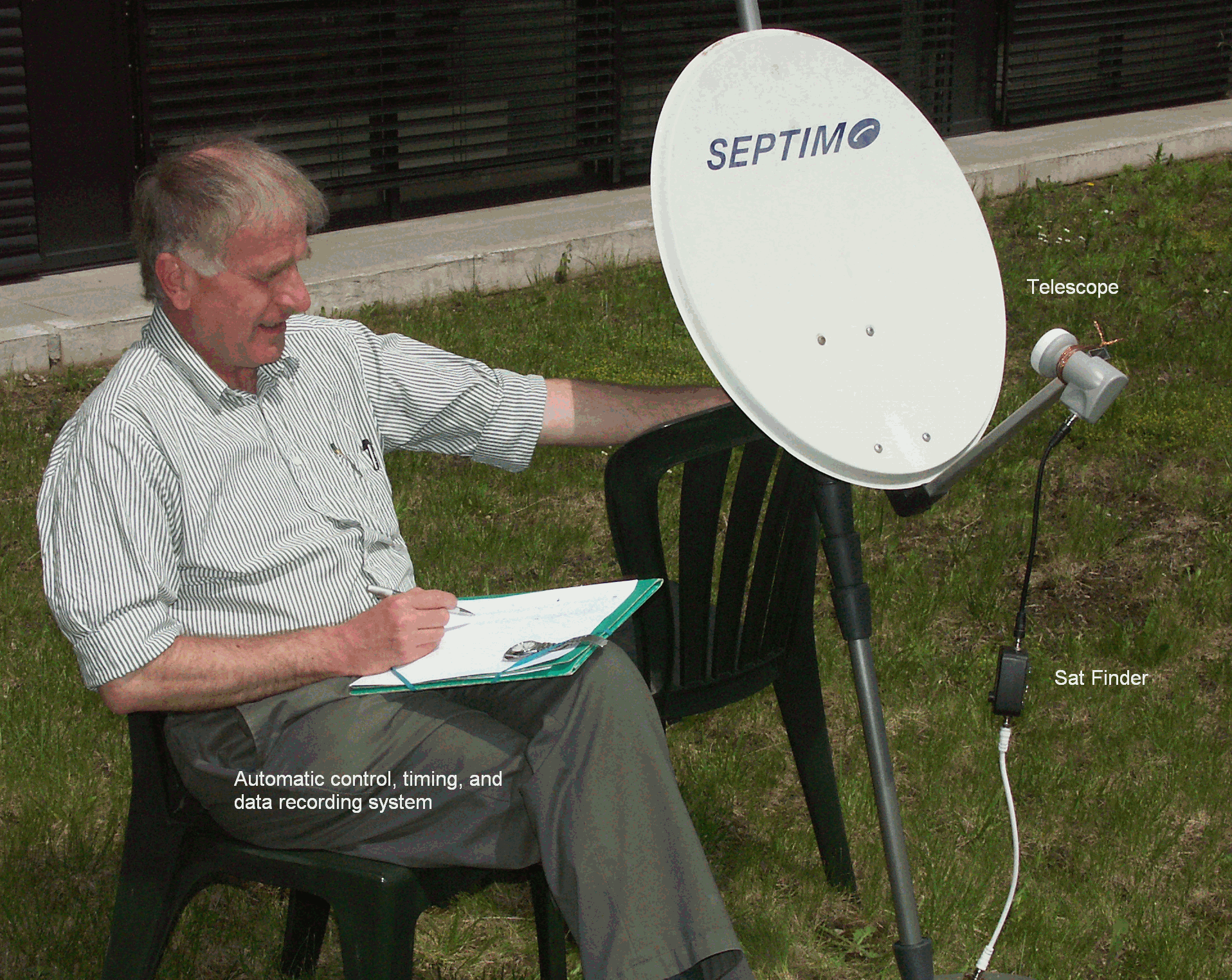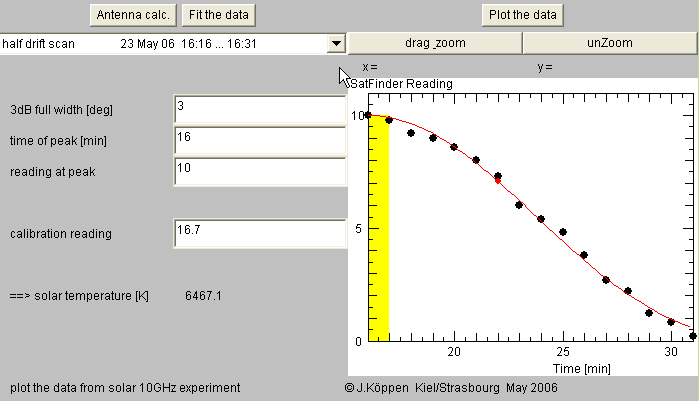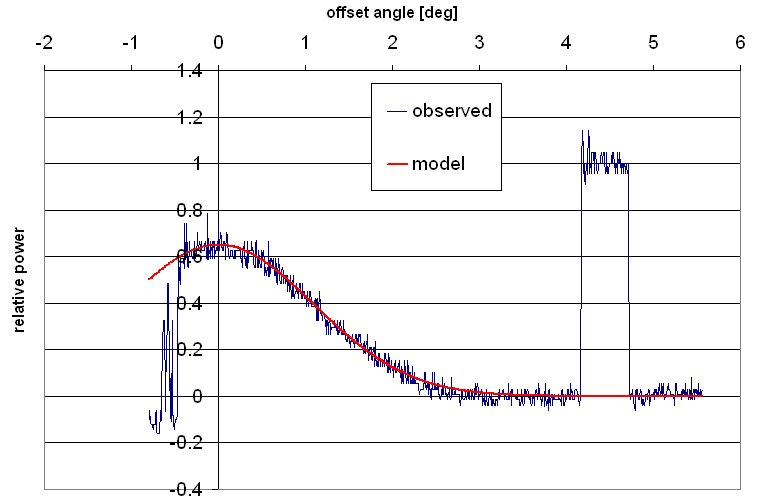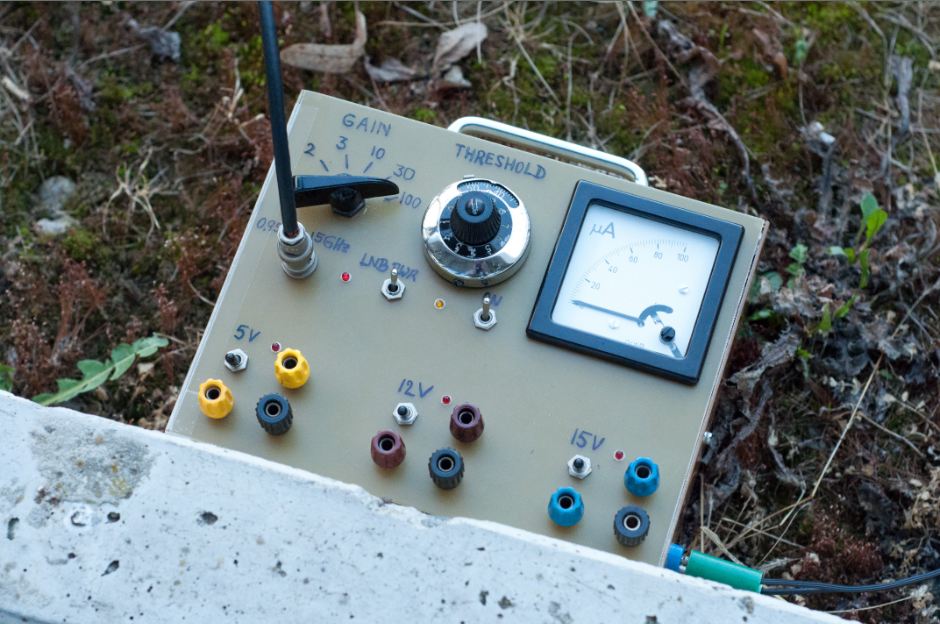
Very Simple, Simple, and Other Approaches
Joachim Köppen Strasbourg 2008

In the manner shown above, I took several drift scan measurements of the Sun, reading the SatFinder instrument at regular time intervals from maximum signal until it faded down to zero. One of these observation is interpreted below: I assume that the SatFinder readings are truely linear to the power of the signal (which is NOT true ...) and fit a simple theoretical pattern for the antenna (the red curve). With this measurement of the width of the antenna beam and a calibration reading taken (or rather estimated) by pointing the dish to the ground, I did obtain a reasonable number for the photospheric temperature of the Sun. One major problem is that the calibration reading is substantially higher than that for the Sun, so I had to make one measurement of the ground and the maximum of the Sun, but another to fully get the dropping of the Sun's signal with time, with two different settings of the 'sensitivity' control!

Below is the Java applet with the data and interpretations of all the solar observations taken with this very simple instrumentation:
Here is a solar scan with the same small dish, the SatFinder as an indicator to find the Sun, but followed by a measurement receiver (from the ESA-Dresden telescope) inside the observatory room, along with the computer. For the flux calibration, the entire telescope was pointed towards the ground, and thus the antenna temperature comes out to be 180 K; the antenna lobe width (HPBW) is 2.8° and hence the temperature of the sun is found to be 6000 K. However, this is lower than we measure with the ESA-Dresden telescope: Most probably, the Sun did not pass right through the centre of the antenna beam!

We can do a bit better: the SatFinder is put in a suitable box together with the power supply and a larger instrument for better visibility during demonstrations. More importantly, the little potentiometer for sensitivity control is replaced by a ten-turn potentiometer, so that any setting can be accurately reproduced and read off. The apparatus can be calibrated by input at 1GHz from a signal generator. This works quite well, but of course we do prefer to use the ESA-Dresden telescope ...

| Top of the Page | Back to the MainPage | to my HomePage |
last update: Apr. 2013 J.Köppen